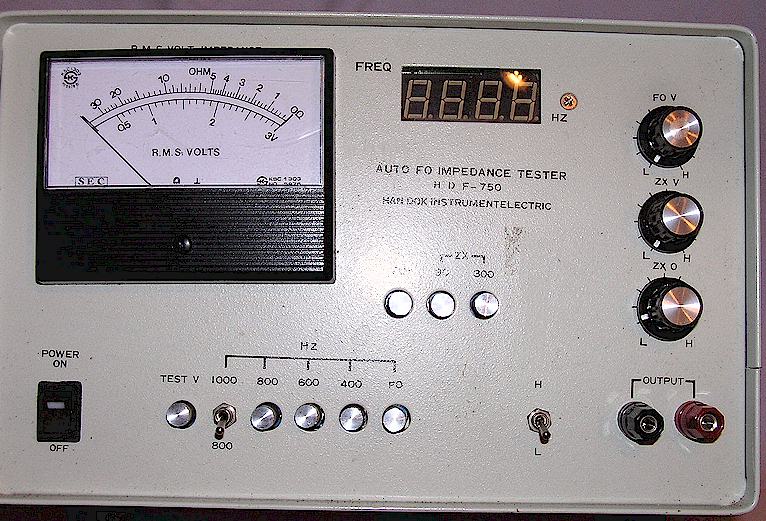
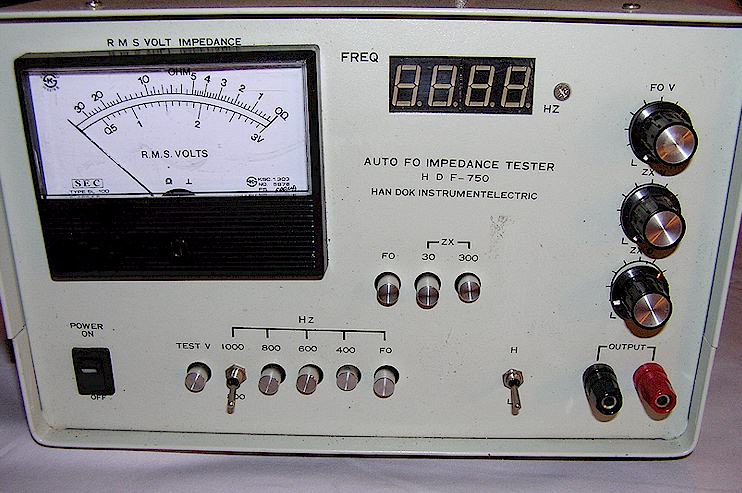
MYSTERY RADIO GEAR
Page 4
HAN DOK INSTRUMENTELECTRIC HDF - 750 Auto FO Impedance Tester
This isn't actually a piece of radio gear but rather test equipment. It seems to have been made in Korea in 1999 and was found for a few Dollars at a local electronics flea market. It seems to be something that measures the impedance of circuits to 300 Ohms at audio frequencies, but the panel markings are, well, a bit inscrutable. Anyone out there have any idea what this is or how you use it ? The manufacturer name only comes up in three Google hits and none are at all useful, and none are the manufacturer's website. My guess is that they are long out of business or their website is only in Korean and Google did not find it using the English letters and name.


WEST COAST ELECTRONICS (Mobile Communications Co.) MFM 25-150
This is a circa 1950 VHF FM mobile transmitter once used in a taxicab in Salinas, California. Anecdotal evidence suggests that West Coast may have been a wholly owned subsidiary of Yellow Cab Co., as anyone who has had one recalls the equipment was originally used in a taxi. Mobile Communications Co. appears to have been a radio common carrier in the very early 1950's that provided dispatch and mobile telephone equipment in competition with the Bell System. This transmitter was part of a two-piece setup with a separate receiver, as was common prior to 1950 among all manufacturers. This is the only piece I have, I do not know what the control head or receiver looked like. West Coast did make one-piece mobile radios as well.
The early 1950's Superman movie serials with George Reeve have at least two episodes where newspaper editor Perry White uses a mobile phone in his car, and that control head is shown to clearly say "Mobile Communications Co.," and "West Coast Electronics," below that, along with "Los Angeles, California." That head has a Western Electric F3 style push to talk handset hanging vertically across the lower front and volume and squelch controls, along with a pilot lamp and a "Busy" lamp. It is not known whether that head went with the two-piece mobiles as shown below or the one-piece types.
Whoever West Coast was, they seem to have been gone by the end of the 1950's. Mobile Communications Co. seems to have disappeared as well. One rather strange reference found on the web is the summary of a federal court case appeal in 1957 where a husband discovered a bugging device planted in his home by "West Coast Electronics" employees, and when he smashed it, it exploded and injured him! It is unknown whether this was the same West Coast as manufactured this transmitter. A 1950's document entitled Industrial Research Laboratories of the United States shows a West Coast Electronics at 5873 W. Jefferson Blvd. in Los Angeles 16, with 35 employees (including two psychologists!) which manufactured "Communication and navigation equipment and training aids."
A funny thing about the transmitter below. Inside the crystal oven is a yellowed and ancient piece of paper. On it is scribbled the message "Crystal will not warp to frequency. He made me use it anyway."
If you know anything about the mysterious West Coast Electronics or Mobile Communications Companies, or have any of this equipment, please let me know!
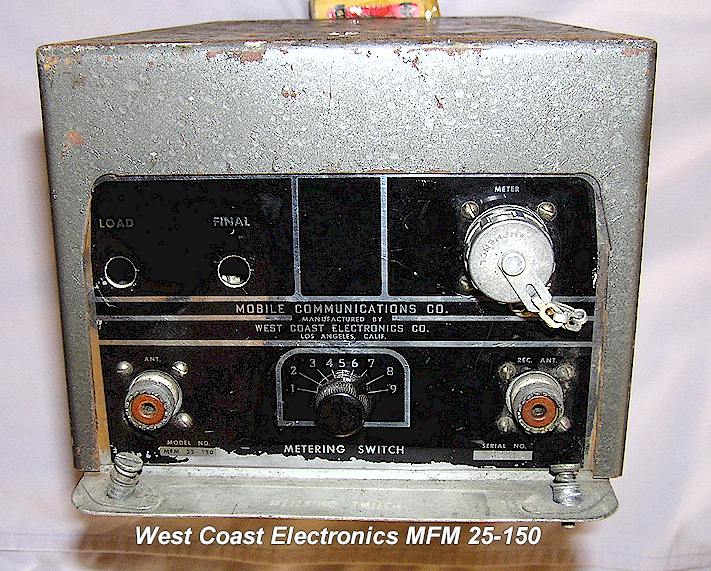
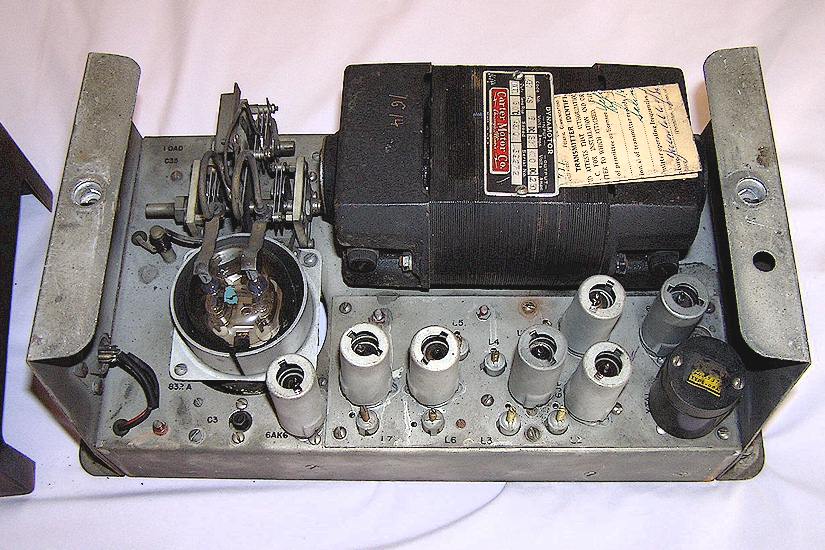
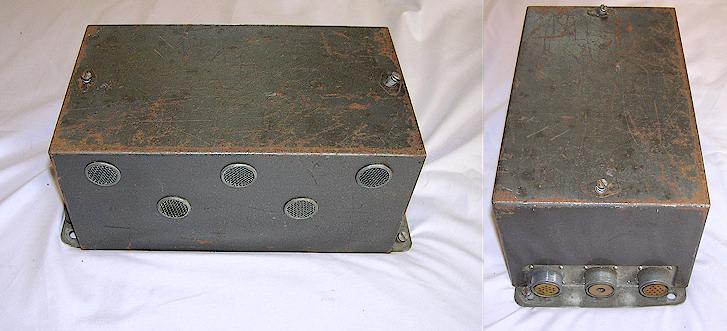
Here is an example of a one-piece West Coast mobile radio that I rescued at the 2018 Military Radio Collectors Group meet in Paso Robles, California.
This is marked :
Model M FM 15 150 B
where the underlined letters and numbers are stamped in boxes while the other letters and numbers are pre-printed on the nameplate. Note that some varmint has robbed it of the 832 RF PA tube. The gray boxes on the receiver are either helical or cavity resonators! This set is for 6 Volt operation and is very well made, other than using very cheap phenolic miniature tube sockets. I suspect this dates to the mid 1950's as it features a transmitter modulation-deviation control and even has a metering socket as Motorola did. This is probably a 10-12 Watt transmitter. Crystals were still in it for 152.03 receive and 158.47 transmit, the old VHF RCC "Channel 1" assignment, so it may have been used as an RCC mobile telephone.
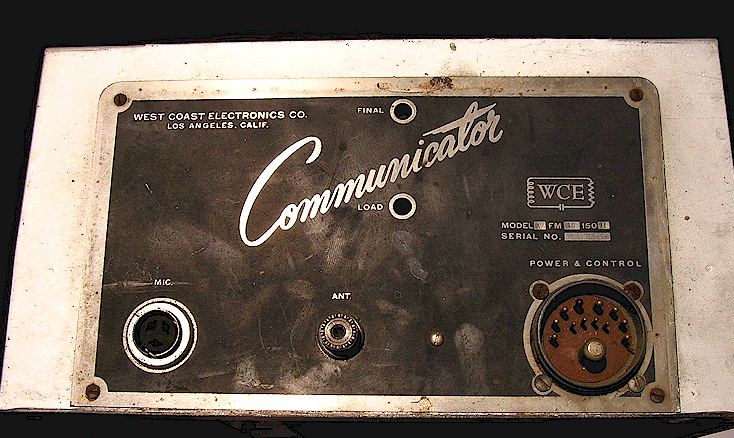
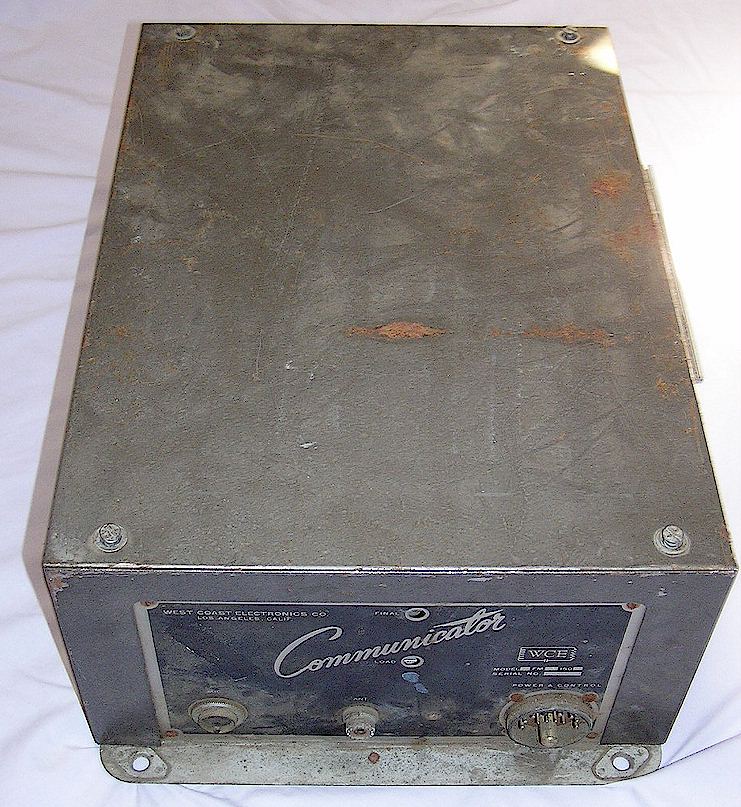
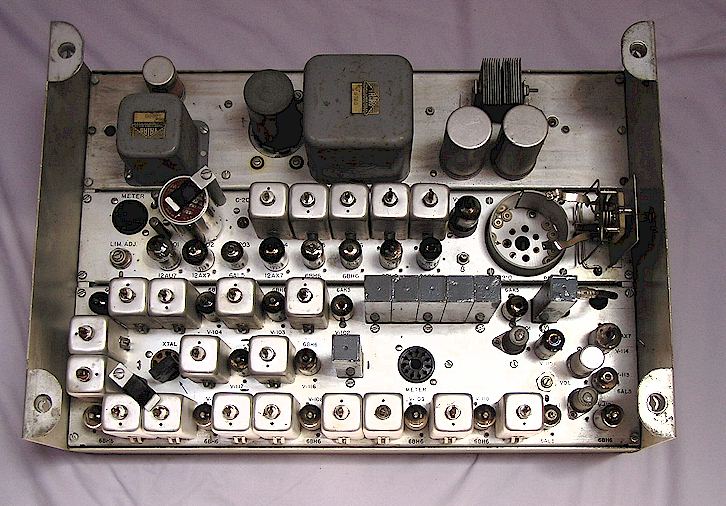
Note the ghastly Cannon NK series power and control connector, which is probably extinct! Other than the cavity resonators, all the parts used in this set seem to be generic over the counter style items. Size-wise, this is about the same size as a contemporary Comco or RCA mobile radio.
MOTOROLA GOVERNMENT SYSTEMS MAR-103
This is a late 1960's-early 1970's UHF portable receiver apparently used by air crews on the flight lines to receive "alert" and "scramble" alarms. It is tuned to two channels in the 300 MHz aircraft band. This one is tuned to 311 and 321 MHz, and there is a center position to the channel selector switch which allows both channels to be monitored simultaneously. The case is a thick metal that can withstand considerable abuse. These were on eBay in about 2004 +/- and have since disappeared. Power is provided by a long-extinct 12.6V TR-289 mercury battery, about the size of a C cell.
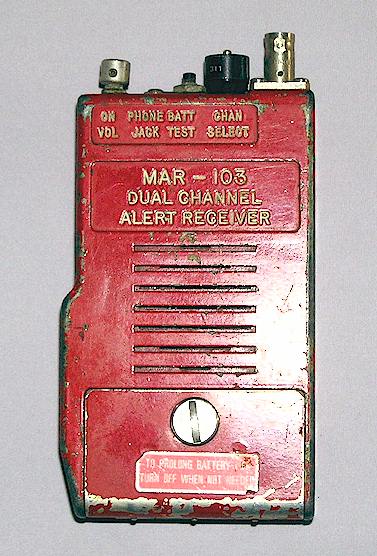
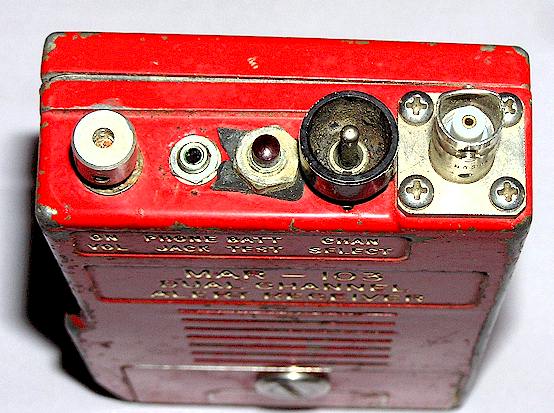
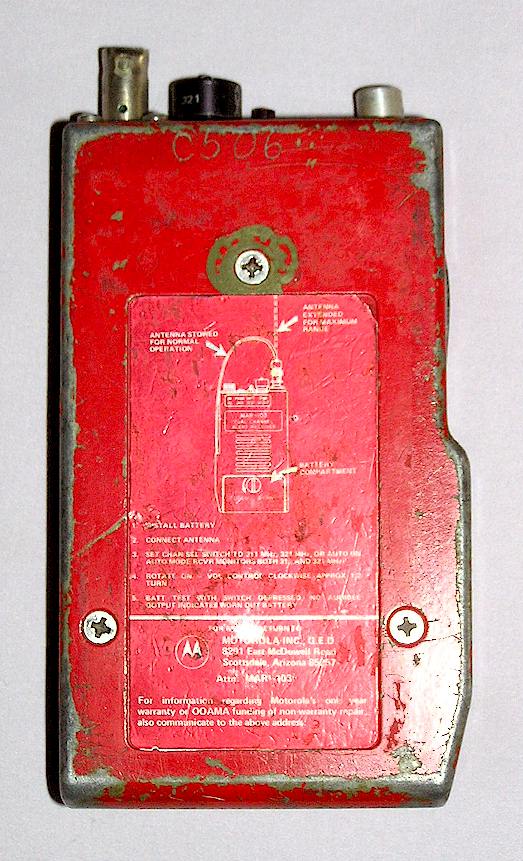
UNKNOWN HF MULTI-MODE RECEIVER - EXCITER
This is a multi-mode exciter and receiver which a friend found at a San Francisco area electronics swap meet some years ago. There are no labels on it giving a clue as to the manufacturer or model. It has an LED display, is synthesized, and originally ran on 440 Hz power. It has a number of modes including "Chirp." To me it looks like something made by Sylvania at the Defense Products facility in Mountain View in the 1970's. Do you know what this is?
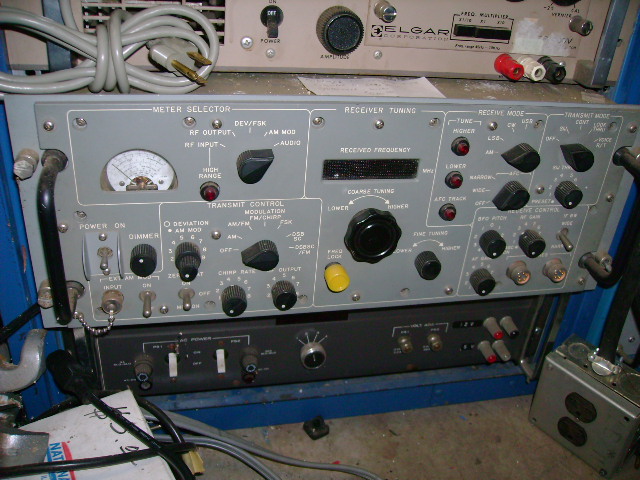
Ei PRS -380-5 Yugoslavian Handheld Police Radio
Not really a mystery but a VHF FM hand-held radio produced in Belgrade in 1987, according to the nameplate. It operates on several 41 MHz channels and while I have not had it apart, it presumably is crystal controlled. The eBay seller I obtained this from claimed it was a "secret police" radio but I think realistically it was probably fire department equipment. It appears that the channels must be changed using a coin or screwdriver via the slotted round knob at the bottom front, which controls a 5 position switch and which has the strange numbers "27..36..62" on the first three positions.
The nameplate on the very bottom reads:
Fabrika Elektronskih Uredaja (Electronic Devices Factory)
Beograd (Belgrade)
Ur. PRS
Typ 380-5
God. 1987
The blue sticker on the rear covers the battery and is a list specifications for it. The housing is all die cast metal and the base is different levels such that it does not easily stand up on a flat surface. There is a sticker inside the battery compartment indicating that the first three channels are on the 41 MHz range
_______________________________________________________________________________________________________________________________
Ver. 07/24/2023 Copyright Geoffrey C. Fors 2015, All rights reserved